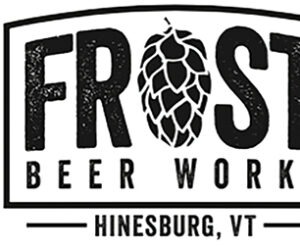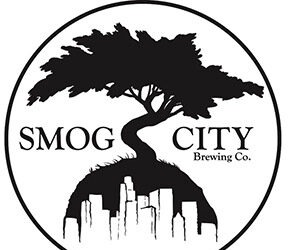Strike Brewing Company
Dear Replicator,
On a recent trip to the Pacific Coast of the U.S. I had the opportunity to sample several brews from Strike Brewing Co. Although, I thoroughly enjoyed their hoppy offerings, one beer stood out to me as being especially alluring: Beat the Heat. Based on the taste and bits of information I gathered, I deduced that it isn’t your typical Pilsner. The can said that it was dry hopped, but I didn’t see what type of hops they were using or any specifics to the other ingredients used. This is a type of beer I’d love to recreate back home to enjoy during our upcoming hot summer months. I’d be really pleased if you could put all the pieces together for me. Thanks in advance!
Andrew Robertson
Australia
Thanks for the request, Andrew! The more I dug into the background on Beat the Heat from Strike Brewing Company, the more the recipe aligned for brewing in the upcoming warm, summer months in the Southern Hemisphere. You’ll also be delighted in its use of more of your “local” Kiwi hops as well.
The brewery’s opening pitch was delivered by Jenny Lewis, Strike’s CEO and co-founder. After graduating from Rice University in Houston, Texas with an MBA followed by the successful management (retail and wholesale operations for four years) of a specialty bakery chain in the San Francisco, California and Hawaii areas, she desired to open her own company. Her husband, Ben, introduced her to Drew Ehrlich in 2008. Drew was a former Stanford baseball pitcher who went on to play Double-A baseball. Over a couple of homebrews while they watched a San Francisco Giants game in 2008, the concept of Strike Brewing Company was born, a culmination of a baseball-fueled dream.

To ensure Strike’s success, Jenny and Drew diversified their skillsets. Jenny ended up quitting her job at the bakery chain in order to focus on the concept and provide the business acumen that the brewery needed; her success has been evident and currently she sits on the Board for the Bay Area Brewers Guild. On the flip side of the coin, Drew immersed himself in the brewing industry by first apprenticing at Firehouse Brewing in Sunnyvale, California under the tutelage of Steve Donohue.
Unlike many other breweries at the time, Strike took a different path than promptly opening a brick and mortar establishment. Beginning in 2011, Strike Brewing began operations by contract brewing at Hermitage Brewing Company in San Jose, California. Their initial focus was on a sessionable lineup, which was trending at the time and complemented watching a game or relaxing with friends without the heft of drinking higher-octane brews. A blonde, brown, porter, and wit were among those primary offerings.
owever, they quickly determined that their patrons desired other styles and within six months of opening, their first IPA was rolled out. Other brews such as a double IPA, imperial red, and a stout soon followed. In July 2014, after several years of building capital, they began brewing on their own premise in San Jose, California in preparation of opening day, October 12, 2014. In that 6,000 sq. ft. (557 m2) space, which was part of a larger 90,000 sq. ft. (8,400 m2) warehouse and uniquely situated near several other sports stadiums and the fairgrounds, they could easily house a 15-BBL brewhouse and accompanying fermenters plus enough room for a taproom for the local San Jose fans.
Success has come in a variety of ways for Strike. In 2019, they opened their second taproom in Campbell, California, a southwestern suburb of San Jose. They’ve morphed their offerings to include hoppy beer in general but continue their love for lager and fruited sours that are more balanced in nature than many domestic variants. Their barrel program focuses on Bourbon barrel-aged strong ales. They also have a goal of putting out one to two new beers every month although they’ve put out six new brews in as many weeks leading up to their sixth anniversary. Numerous beers such as their Screaming Hand Imperial Amber, Colossus of Clout Irish-Style Red Ale, Big Wall Imperial Stout, Brown, and Blonde have all won medals at the US Open Beer Championships, California State Fair, and/or World Beer Cup.
They’ve also remained open to collaborations and have discovered that such initiatives are amazing sources of inspiration. In July 2015, they launched a venture with the renowned NHS, Inc.’s Santa Cruz Skateboard Company, which produced their Classic Dot Blonde Ale. Since then, the pairing has gone onward to produce Nor Cal California Kölsch and the previously mentioned Screaming Hand Imperial Amber. Akin to their branding, their constantly evolving experimental series is named the Bullpen.
A testament to these rotating series, Beat the Heat is an ode to the fastball — or at least an ode to a faster lager fermentation. Primary fermentation is started near ale temperatures and with yeast pitch rates that allow for a faster start, less yeast biomass requirements, and slight fruity esters that are produced in the first 24 hours. Those esters combined with the fruitiness from the Taiheke® dry hop and the dry finish come together to afford a neo-American Pilsner, perfect for summertime in any hemisphere. Cheers!
Strike Brewing Co.’s Beat the Heat clone

(5 gallons/19 L, all-grain)
OG = 1.049 FG = 1.008
IBU = 24 SRM = 3 ABV = 5.4 %
Ingredients
10 lbs. (4.54 kg) Weyermann Barke Pilsner malt
6.5 AAU Magnum hops (60 min.) (0.5 oz./14 g at 13% alpha acids)
2 oz. (57 g) Taiheke® hops (dry hop)
GigaYeast GY045 (German Lager), White Labs WLP830 (German Lager), Wyeast 2124 (Bohemian Lager), or SafLager W-34/70 yeast
7⁄8 cup corn sugar (if priming)
Step by Step
Mill the grains, then mix with 3.75 gallons (14.2 L) of 162 °F (72 °C) strike water to reach a single infusion temperature of 150 °F (66 °C). Hold the mash at this temperature for 60 minutes.
You can begin the lauter process by either raising to mashout temperature or simply vorlauf the mash until the runnings are clear. Sparge the grains with 4.5 gallons (17 L) and top up as necessary to obtain 6.5 gallons (25 L) of wort. Add the Magnum hops at the outset of the boil and then continue to boil for 60 minutes.
After the boil, rapidly chill the wort down to 68 °F (20 °C). Pitch the yeast and aerate if using a liquid strain. After 24 hours, drop the temperature of the fermentation to 58 °F (14 °C) and then after a second 24 hours, drop it further to 53 °F (12 °C). Maintain this cold fermentation temperature until the gravity reads approximately 1.012–1.015. Raise the temperature back to 58 °F (14 °C) and then allow it to free-rise to clean up any diacetyl.
Once the final gravity has been reached, dry hop with the Taiheke® hops for three days. Rack off the yeast and hops or dump the yeast, dry hops, and trub, and lager the beer for 2–3 weeks at near-freezing temperature (32–34 °F/1–2 °C). Bottle or keg the beer and carbonate to approximately 2.8 volumes.
Strike Brewing Co.’s Beat the Heat clone
(5 gallons/19 L, extract only)
OG = 1.050 FG = 1.009
IBU = 24 SRM = 4 ABV = 5.4 %
Ingredients
5.5 lbs. (2.49 kg) Pilsen dried malt extract
6.5 AAU Magnum hops (60 min.) (0.5 oz./14 g at 13% alpha acids)
2 oz. (57 g) Taiheke® hops (dry hop)
GigaYeast GY045 (German Lager), White Labs WLP830 (German Lager), Wyeast 2124 (Bohemian Lager), or SafLager W-34/70 yeast
7⁄8 cup corn sugar (if priming)
Step by Step
Bring 5 gallons (19 L) of water to a boil. At some point prior to boiling, off heat, add the dried malt extract while stirring, and stir until completely dissolved. Add the Magnum hops at the outset of the boil. Boil for 60 minutes.
After the boil, rapidly chill the wort to 68 °F (20 °C). Pitch yeast. After 24 hours, drop the temperature of the fermentation to 58 °F (14 °C) and then after a second 24 hours, drop it further to 53 °F (12 °C). Maintain this coldest fermentation temperature until the gravity reads 1.012–1.015. Raise the temperature back to 58 °F (14 °C) and then allow it to free-rise to clean up any diacetyl.
Once the final gravity has been reached, dry hop with the Taiheke® hops for three days. Rack off the yeast and hops or dump the yeast, dry hops, and trub, and lager the beer for 2–3 weeks at near-freezing temperature (32–34 °F/1–2 °C). Bottle or keg the beer and carbonate to approximately 2.8 volumes.
Tips for Success:
According to Ryan Bridge, Head Brewer at Strike, “The unique thing about this lager is that we do a ‘warm-start’ ferment. It allows us to pitch less yeast and gives the yeast a strong start at warmer temperatures before we slowly ramp down. The resulting beer has some mild, fruity yeast esters that really work well with the dry hop. We also don’t fine or filter, so it retains a slight haze.” Additionally, “This beer has noticeable hop flavor and aroma (tropical fruit/grapefruit/lime) over a crisp, bready body with mild, fruity yeast esters. It is seriously drinkable and a perfect outdoor summer beer.”



